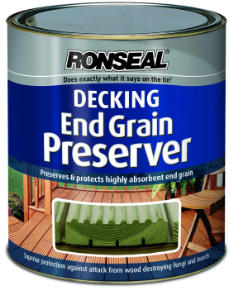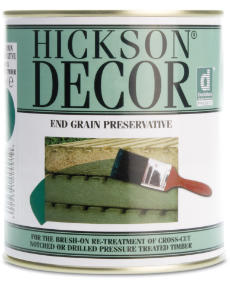Design considerations and tips
Like all timber decking every type of pre-treated Q-Deck timber decking has a knotty appearance.
Like all timber decking every type of Q-Deck timber decking weathers to grey over a period of time. This is mainly due to the greying effects of ultra-violet light. The speed of greying is dependent on a number of factors including the aspect of the deck and in general can be slowed with the application of a protective coating such as Seasonite or protected more fully with the application of a pigmented protective coating such as Textrol or Aquadecks, by Owatrol - on-going maintenance applies with all these systems as with any coating system available on the market.
Choosing grooved or smooth deckboards – By far the majority of timber decks, boardwalks and piers built around the world are surfaced with plain timber boards. Whilst grooved deck boards are often marketed as "anti-slip" there is no evidence to suggest that they perform any better or worse than smooth decking. Choice of deck board style is therefore a matter of personal preference.
Where there is a higher than normal requirement to prevent the risk of slipperiness, for example on ramps, stairs, bridges or on public/commercial installations, then you need to consider Q-Grip decking products that have enhanced grip characteristics or composite decking that is easier to keep clean.
A way of minimising the distance between the aggregate strips that provide the enhanced grip is to consider the use of new Q-Grip Strips™ and Q-Deck York/Q-Deck Canterbury deckboards.
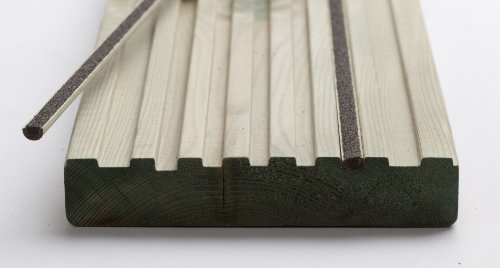
When designing a deck to incorporate Q-Grip slip resistant decking or Q-Grip Strips™ it is important to consider the direction people will walk when using the deck. Q-Grip deck boards are most effective in providing slip resistance when they are placed at an angle perpendicular (at right angles to) to the direction of pedestrian traffic (like that of a boardwalk). See figure (i). When placed parallel to the direction of pedestrian traffic the chance of slipping increases i.e. a slip could occur between the slip resistant aggregate strips within a board or within adjacent boards. See figure (ii)
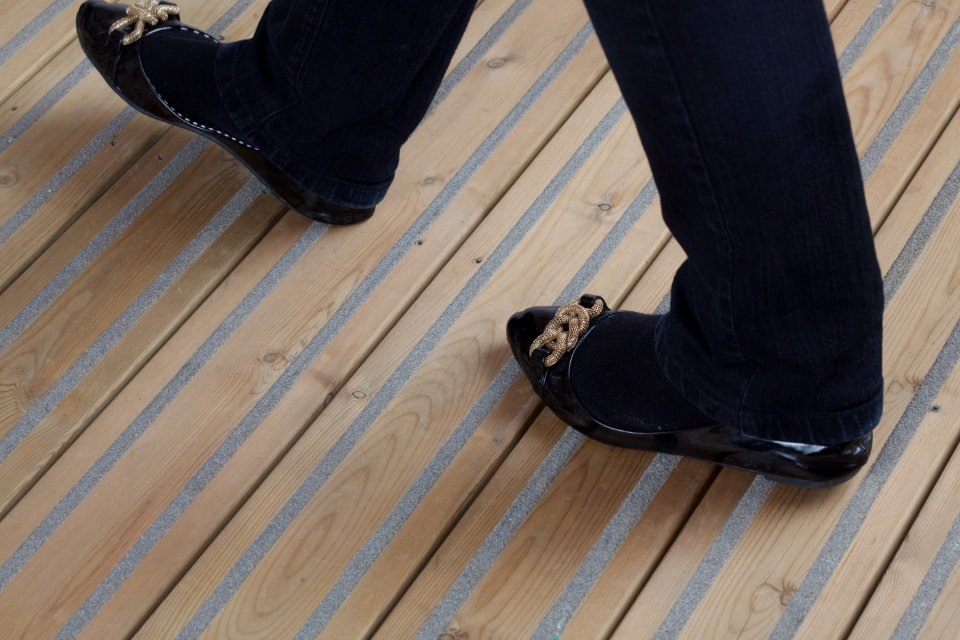
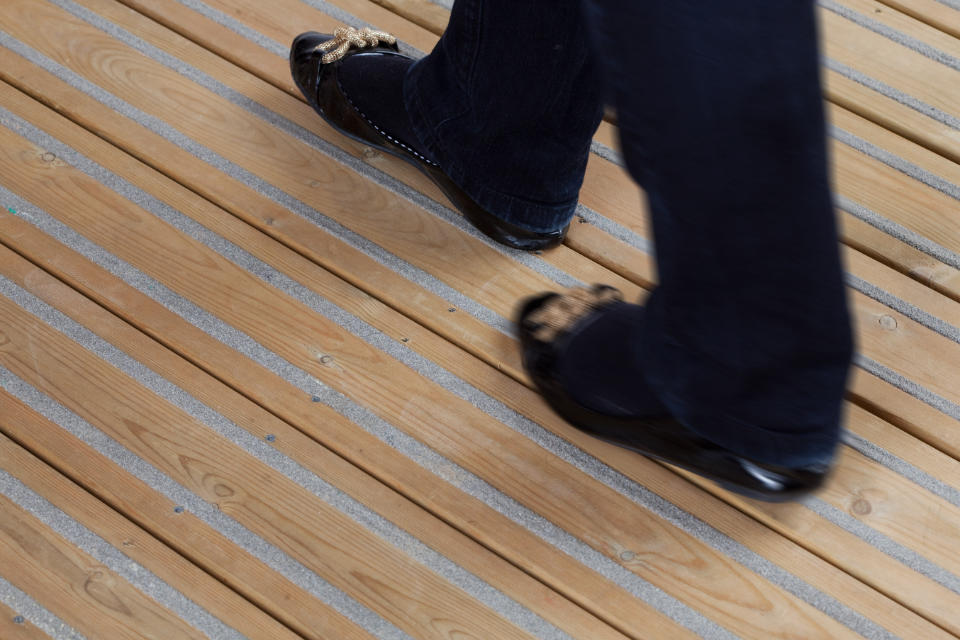
A way of minimising the distance between the aggregate strips that provide the enhanced grip is to consider the use of new Q-Grip Strips™ and Q-Deck York/Q-Deck Canterbury deckboards or Q-Deck Lunawood hidden fix.
For commercial pub and restaurant type decks it is wise to consider the use of fire retardant treated subframe and deckboard components and/or the use of deckboards with enhance grip characteristics. Q-Deck can offer Non-Com® fire retardant treated components as special order products so please consult your Q-Deck retailer who will pass the enquiry on to Hoppings SoftwoodProducts for consideration. Two Q-Deck slip resistant deckboards are available from stock and can be used over the entire deck surface for greater reassurance or strategically on areas such as steps or walkways.
When designing and building decks, always plan to achieve a free draining structure.
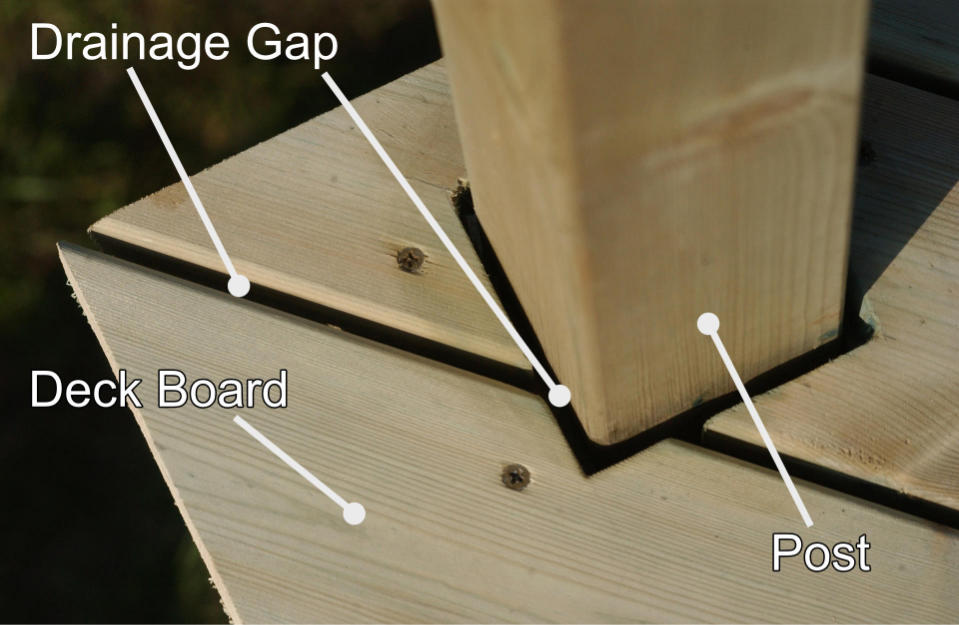
For adequate water 'run off' decks should be laid on a slight gradient (at least 1 in 80). Note: lay grooved decking down the fall to enable water 'run off' and ensure the groove ends can drain freely, ie. pack out fascia if required.
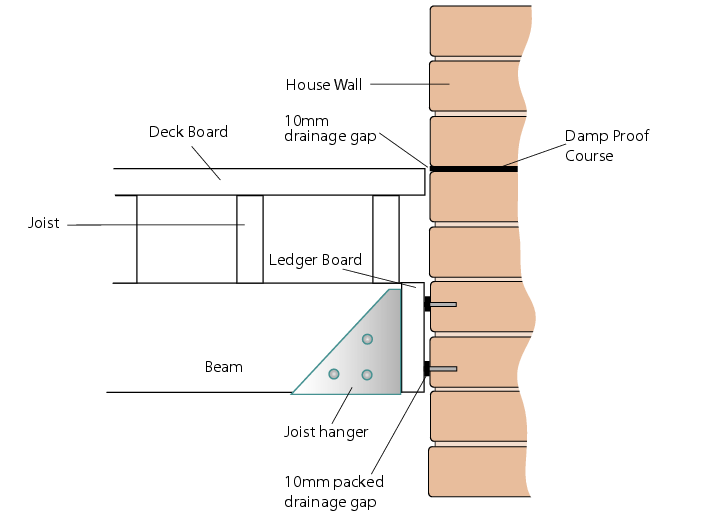
If the deck is attached to a dwelling wall the finished deck height should not compromise the damp proof course (DPC). With 'old' houses it is advisable to keep the deck height at least two brick courses below DPC.
We recommend a maximum span between newel posts of 2100mm.
Note: Q-Deck components are preservative pretreated to different levels of protection to the meet the requirements of industry standards. These standards are defined as 'Use Classes' (see below for full details).
Only select Q-Deck components that are suitable (level of preservative treatment protection) for the situation or Use Class they are to be used in (refer to Use Class table opposite).
USE CLASSES
Use Classes are defined by British and European Standards, providing a guide to the risk of decay or insect attack to timber components, depending upon their end use. The higher the Use Class, the higher the level of preservative protection is required.
| UC | TYPICAL SITUATION |
| 1 | Internal building timbers with no risk of wetting or condensation. |
| 2 | Internal building timbers with a risk of wetting or condensation. |
| 3 | External building, fencing and landscaping timbers used out of ground contact. |
| 4 | External building, fencing and landscaping timbers used in ground contact. |
Use Class 4 components should not be cut, notched or bored if they are then to be used in ground contact. If Use Class 4 deck support posts are cut then the cut end should not be placed in the ground. If Use Class 4 deck joists for ground level or partially elevated decks are cut then they should be laid on a free draining area of compacted hardcore (or similar) not straight onto earth or areas of lawn. Subframes that are laid in direct contact with earth are at increased risk of fungal decay and subsidence.
In working with Q-Deck products, if you decide to combine a decking subframe component into your scheme from an alternative supplier or manufacturer then the Q-Deck warranty cannot be honoured as Hoppings Softwood products have no control over the specification or quality of the non-Q-Deck components. If you still decide to use non-Q-Deck products then it is advisable to ensure that they are treated to Use Class 3 requirements as a minimum or use Use Class 4 for components used in ground contact.
To meet Q-Deck warranty conditions any timber exposed by cross-cutting, notching or boring after treatment must be liberally swabbed with two coats of Ensele® brush-on end grain preservative or Ronseal end grain preserver or Hickson® Decor End Grain Preservative, in accordance with the manufacturers instructions.
ENSELE® has a pale blue colouration which quickly changes to a pale green after application to blend with the treated timber.
Top Tips
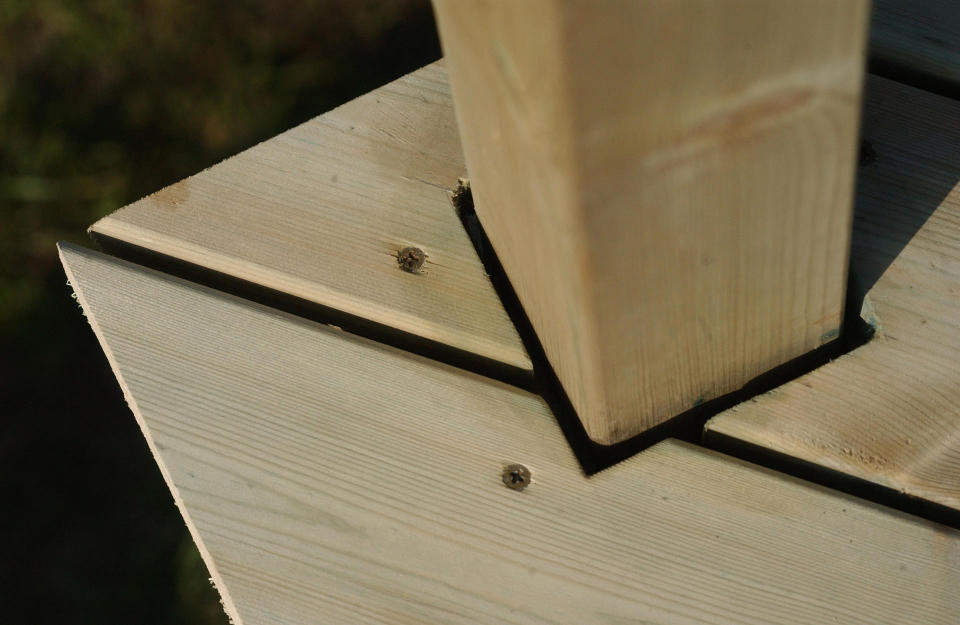
Treated softwood decking should be surface dry and laid with no less than a 6mm gap between boards (this allows for seasonal shrinkage or swelling). Maintain this gap when fitting boards around newel posts for a neat finish whilst still allowing water 'run off'.
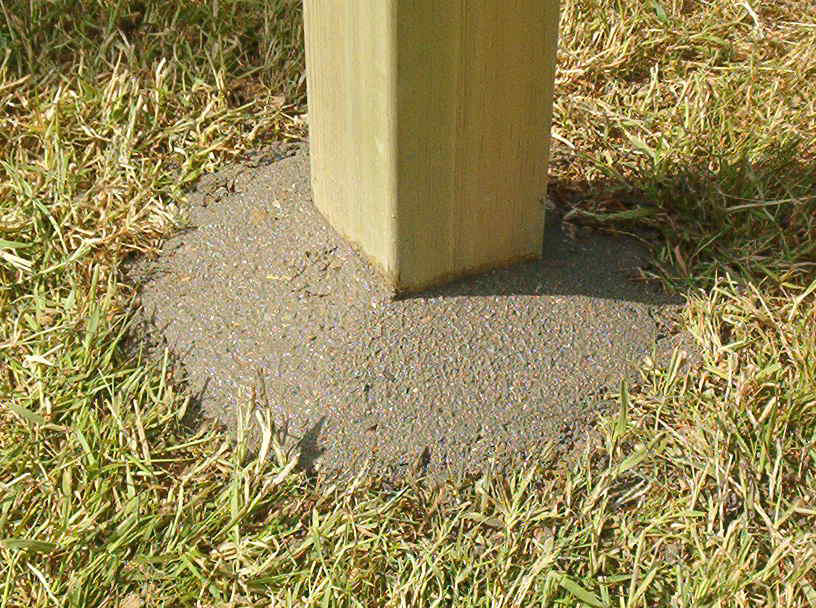
Bevel the top of the concrete footing around the support posts to aid water 'run off'.
Don't let dirt and organic debris accumulate. Sweep your deck regularly and if needs be wash it if dirt does accumulate, particularly if it hinders drainage.
We also strongly recommend the specific deck building publications shown below. These publications are available to buy at good book shops or via the internet.
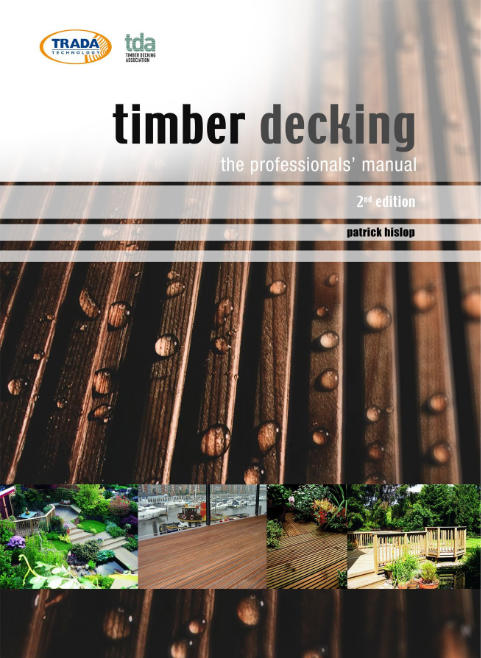
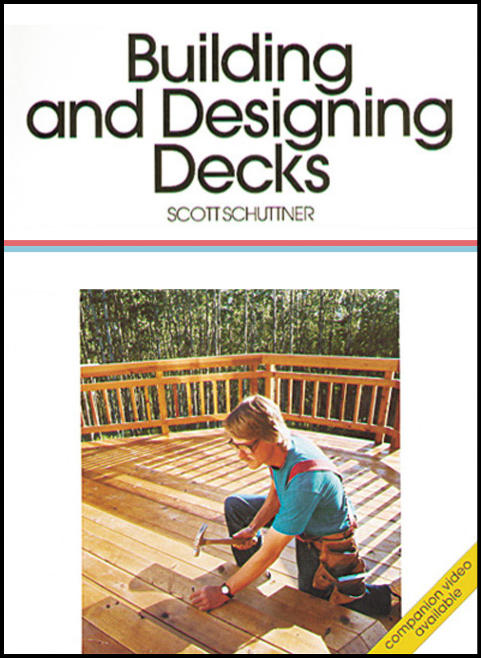
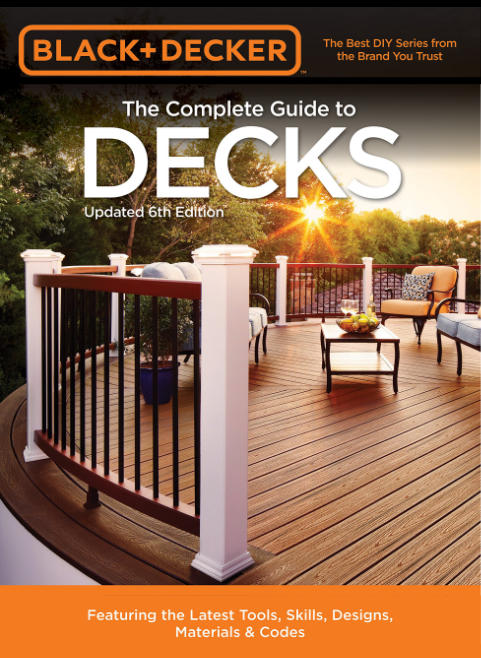
Note: the construction information provided in our brochure can be used as a guide for decks up to 600mm above ground level (for domestic applications/loadings). For decks 600mm or more above ground level, those requiring Building Regulation conformity or those used in a commercial application, it is necessary to seek advice from a professional deck installer.

